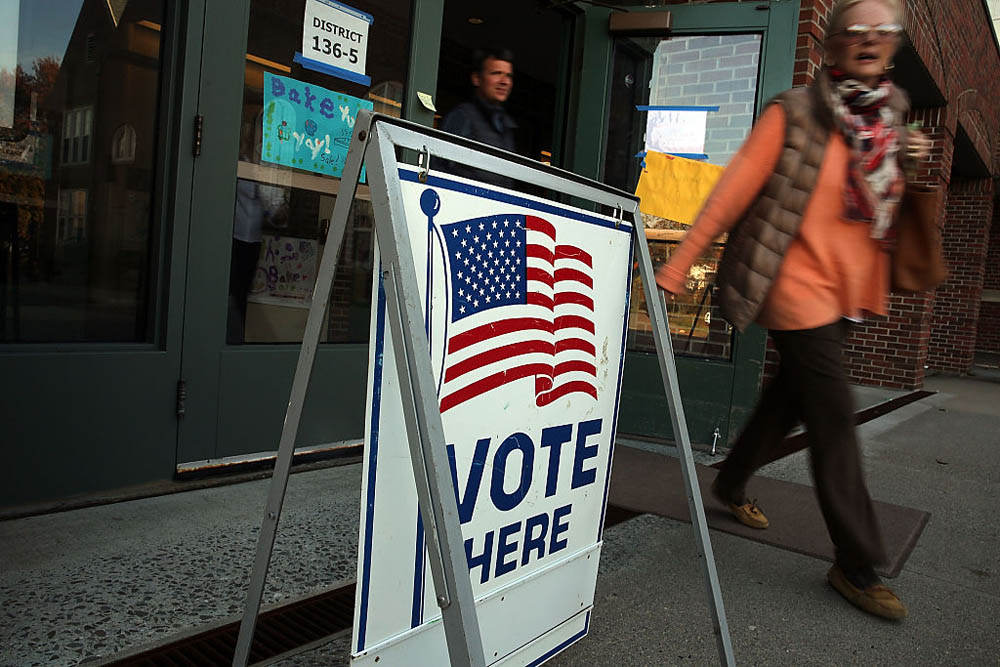Nine Republicans are running for governor. Why not, since campaigns can get tax money?
The debate stage Wednesday night was packed with no fewer than nine Republicans vying for the party’s gubernatorial nomination. With the Aug. 14 primary approaching, anxiety is growing over the Connecticut GOP’s failure to unite behind a candidate.
One reason the campaign trail has enticed so many pols is that Republicans’ chances seem strong. The incumbent, Dannel Malloy, isn’t running for re-election, perhaps because he is the most unpopular Democratic governor in America. Connecticut is a deep-blue state, but a union-commissioned poll late last year put Mr. Malloy’s approval even lower than President Trump’s. GOP representation in the state Legislature has surged since Mr. Malloy took office seven years ago.
But there may be another reason the campaign is so crowded: Connecticut’s “Citizens’ Election Program,” which provides public funds to candidates for state office. The money won’t be disbursed until after the parties’ conventions next month, but a promise of public cash lowers the fundraising bar for potential candidates.
The program was instituted in the wake of Gov. John Rowland’s 2004 resignation for public corruption. Though the misdeeds that forced Mr. Rowland out of office had little to do with campaign contributions, state officials wanted to demonstrate that they cared about clean government. So they gave Connecticut publicly financed elections.
For this year’s gubernatorial candidates, the offer during the primary is $1.25 million each. Accessing the funds requires raising $250,000 in donations that must come mostly from Connecticut residents and cannot exceed $100. It is also necessary to win access to the primary ballot, either by gaining at least 15% of delegates’ votes at the party conventions in May or gathering almost 10,000 signatures from registered party members. Then after the primary, the major-party general-election nominees get another $6 million each.
“More competition is good, but at some point you get close enough where you have to start thinning the herd to really serious candidates,” says one veteran GOP operative. In his view, the public-financing program is “giving a false impression that they have support that they don’t really have.”
The availability of public money in state races could help explain why, despite the Connecticut GOP’s strength in state offices, Democrats dominate the state’s congressional delegation. Republican consultant Liz Kurantowicz says public financing for state offices makes it harder to recruit contenders for the House and Senate: “Some of these candidates look at it and go, ‘Well, I could go run for Congress and I’d have to work really hard to raise the $2 to $3 million that I would need to be competitive, or I can run for governor and the state will kick in the money for a campaign.’ ”
This year’s election will be the state’s third gubernatorial contest under the public-financing program, whose cost has attracted scrutiny amid Connecticut’s apparently unending fiscal crisis. Last year, lawmakers had to close a $5.1 billion two-year shortfall; during the current legislative session the gap is around $200 million; and deficit projections for the two-year budget to be taken up in 2019 are running in the billions. The cost of the Citizens’ Election Program, counting all state races, could reach $40 million this year.
Public financing reflects a shift away from the party-centric political system, where party elders selected nominees in proverbial “smoke-filled rooms.” Across the country, changes like open primaries and campaign contribution limits weakened this system. The Citizens’ Election Program goes a step further, freeing politicians from the discipline imposed by reliance on party organizations for campaign funds.
Is that a good thing? From the late 1940s through the 1970s, John Moran Bailey, one of the most noted political bosses in the nation, kept tight control of the Connecticut Democratic Party’s nominating process. As Joe Lieberman, the state’s future U.S. senator, wrote in his 1981 political history of Connecticut, Bailey “developed his power painstakingly and used it gently to give a majority of Connecticut voters the kind of government they wanted.”
Republicans here could use the likes of a John Bailey today. Though Wednesday’s debate featured substantive issues such as pensions and criminal-justice reform, an informative argument is almost impossible with nine participants. Despite Mr. Malloy’s unpopularity, Democrats can count on strong organizational support from unions this November. The GOP nominee will need a clear and distinct statewide profile to prevail, and so far no one has succeeded in breaking out.
Unless the party settles soon on a front-runner, Republicans risk at best several more months of idle dispute, financed by millions in public funds that cash-strapped Connecticut can ill afford to spare—and, worse, a Democratic victory and four more years in the wilderness.
This piece originally appeared in The Wall Street Journal
______________________
Stephen Eide is a senior fellow at the Manhattan Institute.
This piece originally appeared in The Wall Street Journal
